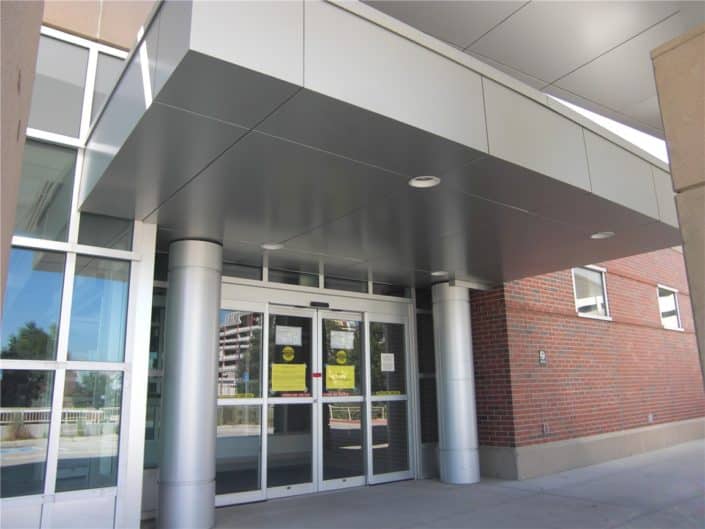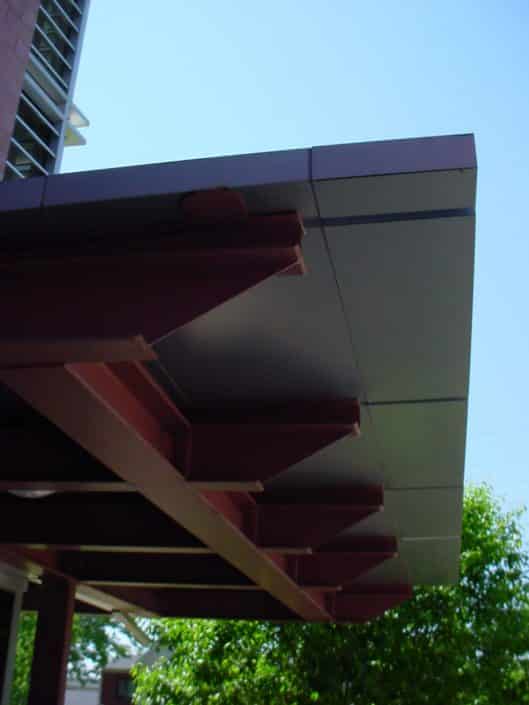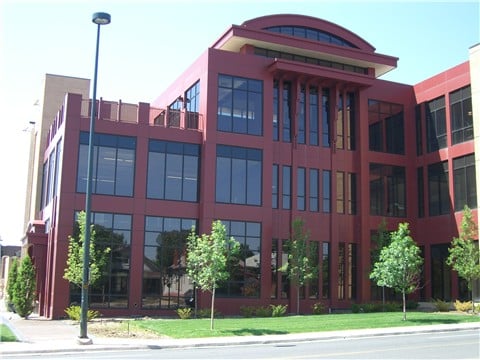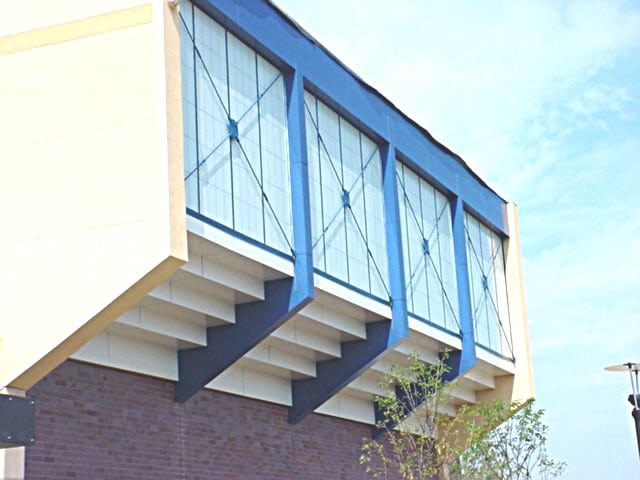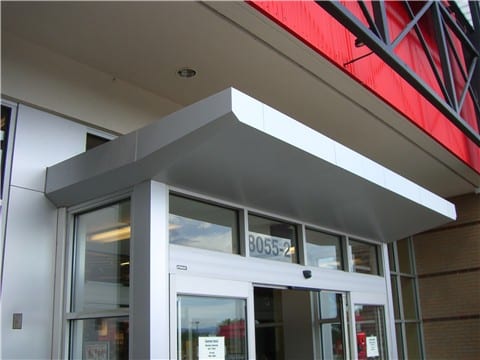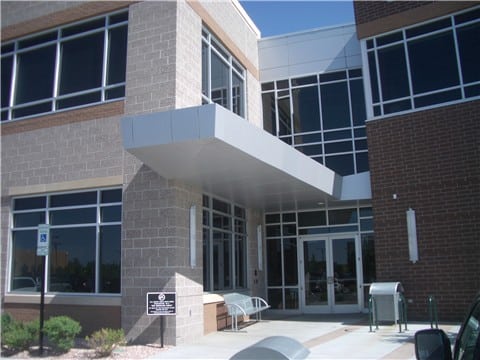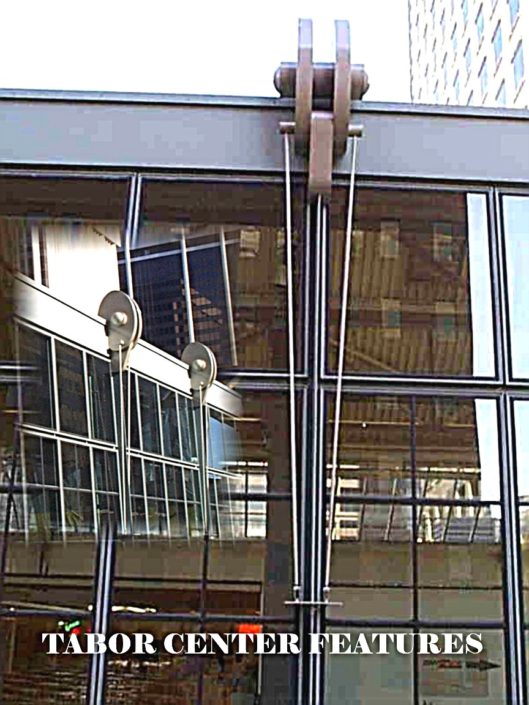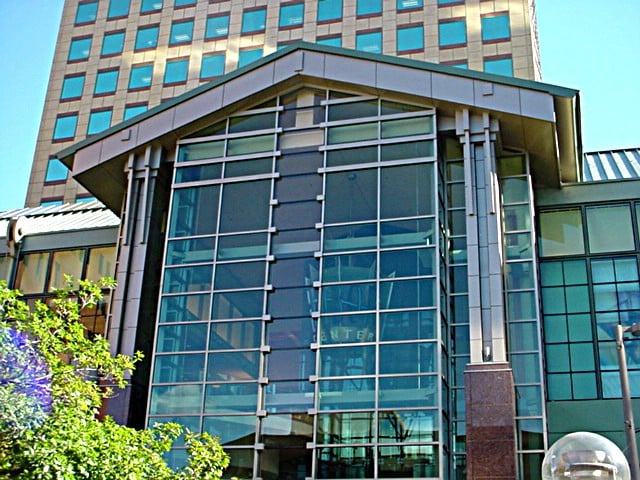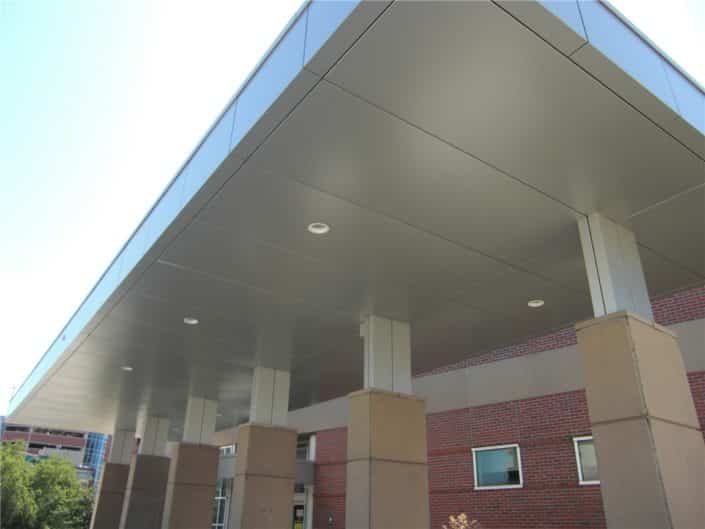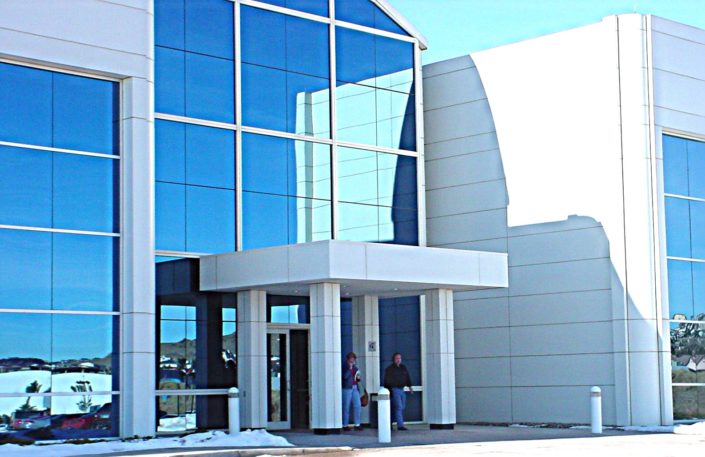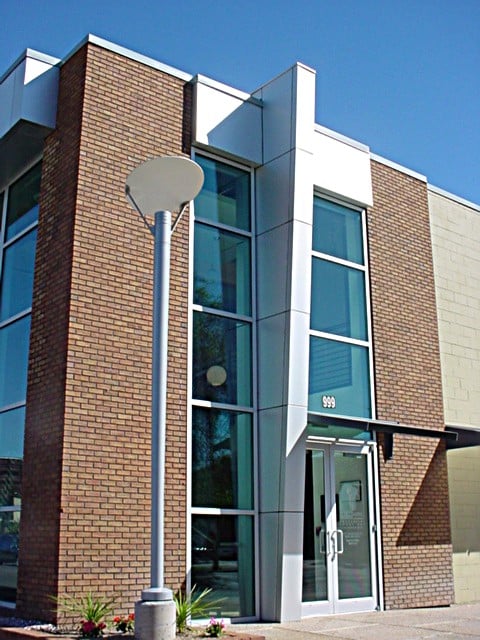Aluminum Composite Panel Fabrication
Fabrication of Aluminum Composite Panels
Aluminum Composite Panel fabrication is the process of cutting, bending/folding, and prefabricating panels. Finally they install onto building facades, canopies, and various other uses. Note that we are only fabricators of composite panel systems, hence we do not perform any installation services.
Aluminum Composite Panel Names & Terminology
There are many names used for Aluminum Composite panel. It is all pretty much the same animal, with some very slight differences.
- Aluminium Composite Material (ACM)
- Aluminum Composite Panel (ACP)
- Metal Composite Panel (MCP)
- Metal Composite Material (MCM)
- Sandwich Panel
- Trade Names: (at least the major players)
- Alucobond Panels – 3A Composites
- Reynobond Panels – Arconic (Formerly Alcoa Building Products)
- Dibond Panels – 3A Composites – Primarily for signage applications
- Alpolic Panels – Mitsubishi Plastics, Inc.
What is Aluminum Composite Panel Material?
Aluminum composite panel is a very versatile product. It is functional, durable, and it creates an extremely desirable “High Tech” look. Panels are truly flat, showing no oil canning vs. typical steel siding materials. Aluminum composite panels are used in applications such as entrance canopies, wall systems, facades, soffits, monument signage, or other architectural elements.
Aluminum composite panels normally come in 4mm or 6mm thickness. The most common thickness for buildings is 4mm. Blank size can range from a minimum of 48″ x 120″ up to 62″ x 196″. These panels, usually cut to size using our CNC Router, create some stunning effects. With this router, we can create the simplest square panel, or very complex shapes. Things such as ovals, circles, arcs, even logos or text are all possible to incorporate into your design. In some instances, we even weld together panels to create artistic elements that enhance your building’s image. See our CNC Routing – Aluminum Composite Fabrication Page for more information on our capability in fabrication of aluminum composite panels.
Typically aluminum composite panels consist of .020″ aluminum skins and a polyethylene (PE) core. Most manufacturers offer a fire rated core for instances where fire rated product is a concern. Aluminum composite finishes are typically PVDF (Kynar) finishes with metallic painted options that specifically mimic anodized finishes. Additionally some manufacturers also provide clear anodized, and even zinc finishes.

